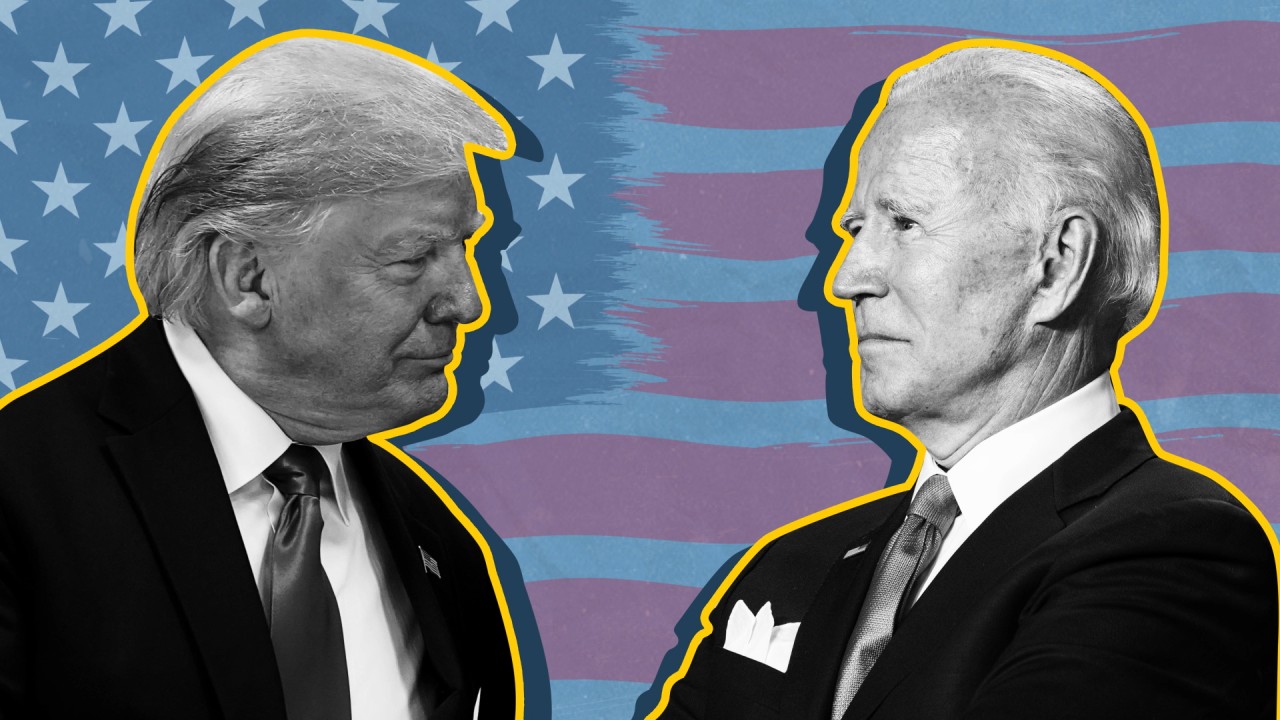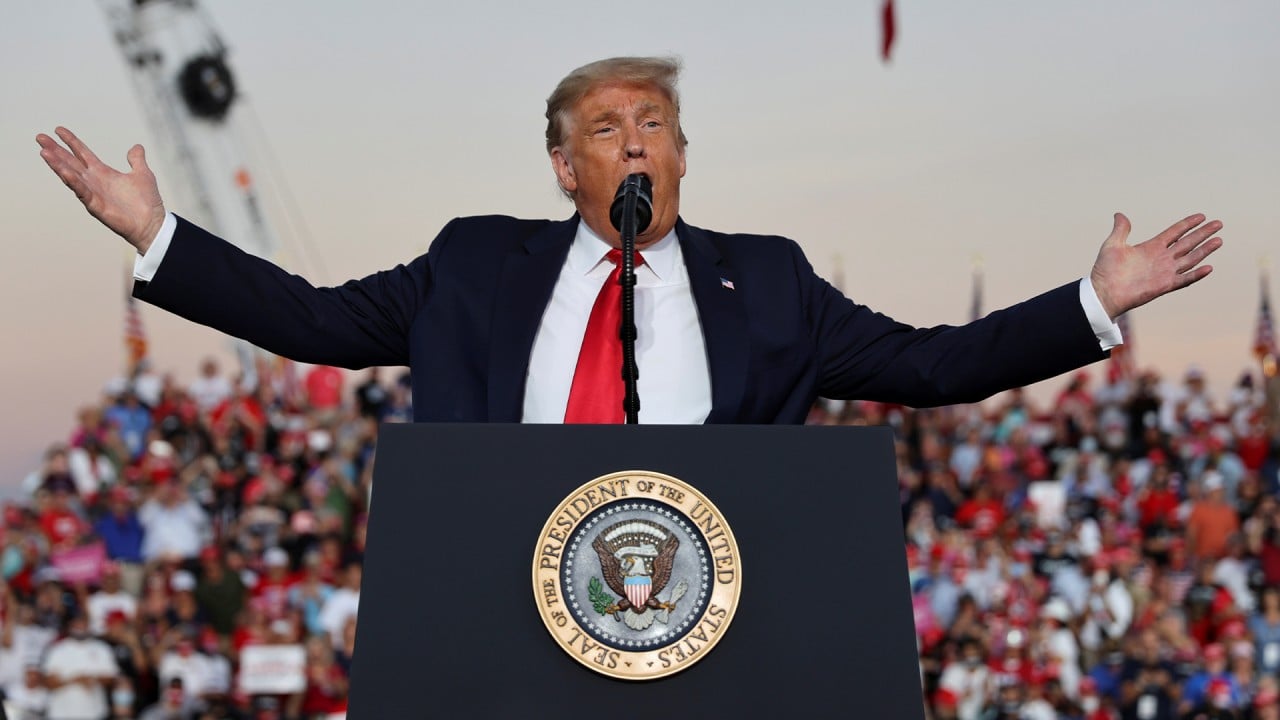
US voters are remembering Donald Trump’s unfulfilled promise to bring back jobs
- Some of the states hit the hardest by a decline in industrial employment could now cost the president re-election on November 3
- Manufacturing jobs haven’t returned to the United States despite candidate Trump’s 2016 rhetoric, which often vilified China
As voters in the United States prepare for the presidential election in November, the South China Morning Post is exploring the potential ramifications for China. The latest part of the US election series looks at President Donald’s Trump’s promise to restore manufacturing jobs.
In May, United States Steel announced its fourth round of lay-offs, letting go 2,700 workers immediately with up to 6,500 employees possibly on the chopping block.

11:15
Trump vs Biden: The 2020 US presidential election
“A lot of Trump’s promises were hollow rhetoric that didn’t amount to meaningful gains for manufacturing,” said Scott Paul, president at the Alliance for American Manufacturing (AAM), a non-profit organisation founded by the United Steelworkers union and US manufacturers.
“What was missing was this larger strategy or understanding of how to reshape American competitiveness and how to deal with China.”
The four years have proven Trump’s inability to translate policies into real jobs for American workers.
Trump had lambasted China for stealing American jobs, and as a candidate in 2016 promised to bring back millions of good paying jobs. His tariffs on hundreds of billions of dollars’ worth of Chinese goods, imposed after he began a trade war in mid-2018, not only failed to restore US domestic production, but they weakened already tepid demand for the goods.
US presidential debate: Trump blames ‘China plague’ for American economic woes
“It was just a mistake to have accepted a half-baked trade deal that undermines his own strategy and goals in the long run,” said Paul. “The challenge from a manufacturing perspective is none of that is going to remove the most anti-competitive practices, which are the subsidies. In many ways, that opportunity was foreclosed.”
Trump also famously promised to spend US$1 trillion on infrastructure, using American products to build bridges, roads and other projects. Little has happened with that plan.
The broken promises could be fatal for Trump as a recession unfolds in key battleground states. Critical former Democratic states – Michigan, Wisconsin and Pennsylvania – could easily flip back this time after handing Trump a thinly eked-out Electoral College victory by a combined 80,000 votes in 2016.
A change of heart among some manufacturing states was evident. Over the past six weeks, the United Steelworkers union shined a lighted Joe Biden-Kamala Harris display on buildings in Pennsylvania, Ohio, Wisconsin, Minnesota and Illinois. Last weekend, it was displayed against the backdrop of the Trump International Hotel & Tower in Chicago.

Eighty-nine per cent of voters said the economy, which affects jobs, was the top concern, a Gallup poll this month showed.
“Trump did not perform the miracle he promised, he is going to get punished. It’s simply a classic voting pattern where you see the economy slows down, the voters punish the president. The economy now is much worse than the 2008 Great Recession,” said Michael Lewis-Beck, a professor of political science at University of Iowa.
“With the unemployment numbers high, people are going to go rogue and vote against Trump,” he added.
The Democratic candidate, former vice-president Joe Biden, clearly saw an opening. Biden has proposed a “Made in America” tax credit and an offshoring tax penalty on companies that produce goods or services overseas for sales back to the US.
Trump and Biden’s methods to reduce China dependency ‘night and day’
“I do not buy for one second that the vitality of American manufacturing is a thing of the past,” Biden said at a recent Michigan rally.
“Today, I am releasing a plan of how to create millions of good-paying union jobs. When we spend American taxpayers’ money, we should use it to buy American products and support American jobs,” he said.
Meanwhile, Trump has been playing down the jobs issue, limiting it to passing references.
Biden is leading Trump in six battleground states – Pennsylvania, Wisconsin, Michigan, Florida, North Carolina and Arizona – as of October 22, according to a Real Clear Politics polling average. Blue-collar jobs declined in these states in recent years, sending poverty levels into double digits, 2018 Census Bureau data showed.

Less than two weeks before election day, polling averages put Trump’s approval rating at 43.2 per cent. His rating, which has never exceeded 50 per cent, has averaged 41 per cent, the lowest since Jimmy Carter in 1980.
Many economists consider Trump’s tariffs on Chinese imports as a tax on American companies and consumers, increasing consumer costs by roughly US$57 billion a year, according to an analysis by the American Action Forum think tank. The president and his advisers have rejected the notion, insisting that tariffs helped correct US trade imbalance and protect US manufacturing.
In reality, as demand for Chinese goods dried up, the duties did not help increase US production.
Domestic manufacturing output was unchanged at US$6.27 trillion in 2019 compared with the previous year, even though imports from China dropped 17 per cent, according to consulting firm Kearney’s Reshoring Index, which tracks the amount of US goods produced at home and imported from overseas.
Could a Biden presidency alter the direction of US-China tech war?
“It is highly desirable to move production out of China because it's just too expensive to make them there,” Weijian Shan, chairman of PAG, a Hong Kong-based private equity firm that invests in pharmaceutical and steel manufacturers with complex supply chains.
Combined with the rising labour costs and strengthening Chinese currency, “I have seen relocation from China to Mexico and Vietnam”, even “Chinese companies are moving production,” Shan said at a recent China Institute event.
But, he added: “I am not aware of any meaningful return of American manufacturing to the United States from China. The [US] policies designed to correct the trade balance are not achieving their effects.”
The US trade deficit in goods hit a record at US$83.9 billion in August, according to the Census Bureau.

02:01
‘I'll kiss everyone’, says Trump returning to campaign trail after bout with Covid-19
But Trump continues to claim that things are looking up despite all evidence to the contrary.
In September, his campaign ran a television ad saying the United States was experiencing “the best” economy in history. The background image was a visit Trump paid to US Steel in 2018 before the company started to furlough thousands of workers.
During that trip, Trump tweeted: “Steel is coming back fast! US Steel is adding great capacity also. So are others.”
But polls show that voters have not been convinced.
“One thing that manufacturing workers are very frustrated with is being used as political props,” said Paul of AAM. “It’s great to go into a factory, taking pictures with workers with hard hats and flags.”
“Many times the factory workers feel the politicians forget about them after the election,” he said.
“A lot of people looked at the fact that a blast furnace opened up and closed and thought the president didn’t get the job done. There are lots of conversations going on about what needs to change.”











